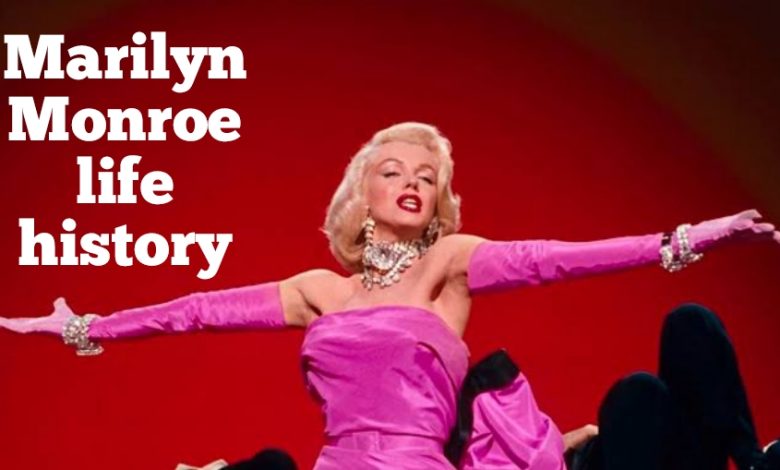Marilyn Monroe: The Tragic Life of a Hollywood Icon
Marilyn Monroe life history

Early Life and Troubled Childhood
Marilyn Monroe, born Norma Jeane Mortenson on June 1, 1926, in Los Angeles, California, had a troubled and unstable childhood. Her mother, Gladys Pearl Baker, suffered from mental illness and was often absent from Norma Jeane’s life. As a result, Norma Jeane spent much of her early years in foster care and orphanages.
Despite the hardships, Norma Jeane showed signs of the charisma and beauty that would later make her a Hollywood icon. At the age of 16, she married her first husband, James Dougherty, in 1942 to avoid returning to the foster care system.
Discovery and the Transformation to Marilyn Monroe
In 1945, while working in a munitions factory during World War II, Norma Jeane was discovered by a photographer. This chance encounter led to her signing a modeling contract and changing her name to Marilyn Monroe. Her striking looks and photogenic qualities quickly made her a popular pin-up girl.
Marilyn’s transition to the silver screen began in 1947 with a small role in the film “Dangerous Years.” Over the next several years, she steadily built her acting career, appearing in a series of minor roles and gaining recognition for her comedic timing and innate sex appeal.
Rise to Stardom
Marilyn’s big break came in 1953 when she landed the lead role in the hit comedy “Gentlemen Prefer Blondes.” Her performance as the gold-digging showgirl Lorelei Lee cemented her status as a rising star and sex symbol.
In the following years, Marilyn starred in a string of successful films, including “How to Marry a Millionaire,” “The Seven Year Itch,” and “Some Like It Hot.” Her iconic performance in “The Seven Year Itch,” where she stands over a subway grate with her white dress billowing up, became one of the most famous images of the 20th century.
Personal Life and Relationships
Marilyn’s personal life was often the subject of intense media scrutiny. She was married three times, to James Dougherty, baseball player Joe DiMaggio, and playwright Arthur Miller. Her marriages were often turbulent, and she struggled with issues such as depression, anxiety, and addiction.
Despite her fame and success, Marilyn remained a fragile and vulnerable individual. She was known to have affairs with high-profile individuals, including President John F. Kennedy, further fueling the public’s fascination with her.
Decline and Tragic Death
Marilyn’s later years were marked by increasing personal and professional difficulties. She had difficulty memorizing lines, leading to conflicts with directors, and her drug and alcohol use escalated. In 1962, she was fired from the film “Something’s Got to Give” due to her erratic behavior.
On August 5, 1962, Marilyn Monroe was found dead in her home in Los Angeles from an overdose of barbiturates. Her death was ruled a probable suicide, although the exact circumstances surrounding her passing remain a subject of much speculation and conspiracy theories.
Legacy and Impact
Despite her untimely death at the age of 36, Marilyn Monroe’s legacy as a cultural icon and sex symbol has endured. She is remembered for her captivating screen presence, her distinctive look, and her embodiment of the glamour and allure of Hollywood’s golden age.
Marilyn’s influence can be seen in the countless depictions, tributes, and imitations of her image in art, fashion, and popular culture. She has become a symbol of female empowerment, a representation of the complexities and vulnerabilities of fame, and a tragic figure whose life and death continue to fascinate the public.
In the decades since her passing, Marilyn Monroe has become one of the most recognized and beloved figures in the world. Her enduring legacy and the ongoing fascination with her life and death have cemented her status as a true Hollywood legend.
